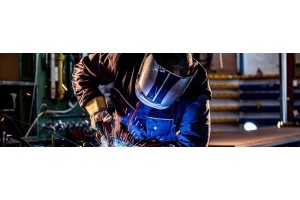- Material
-
- Aluminium 61
- Brass 8
- Stainless Steel 8
- Galvanised Steel 1
- Mild Steel 1
How Much Force Can Mild Steel Withstand?
Mild steel (or carbon steel) is popular in all kinds of industries for its easy workability and affordability. What it's not known for, however, is its strength.
Mild steel has a relatively low carbon content, typically between 0.05% and 0.25%. This limits the formation of strong crystal structures more than it does in steels with higher carbon content. While this makes it easier to shape and bend - a major advantage in applications like construction or car body parts - it comes at the cost of a lower resistance to force.
If you're thinking about using mild steel in your next project but are worried that it won't be strong enough, let the metal experts at Clickmetal help you make the right decision. In the guide below, we've explored the yield and compressive strength of mild steel, compared what it is and isn't strong enough for, and measured how it squares up to stainless steel. Find out all you need to know about mild steel's strength by reading on!
What amount of force can mild steel withstand?
There's no one-size-fits-all answer to this, as the amount of force that mild steel can withstand depends on the type of loading (tension or compression), the shape and dimensions of the steel component, and the specific grade or composition of the mild steel. However, there are some general guidelines regarding the strength properties of mild steel, which we've detailed below.
Yield strength of mild steel
Yield strength refers to the amount of stress a material can withstand before it begins to deform plastically. In other words, it's the point at which a material will permanently bend or warp out of shape when under pressure.
Mild steel has a yield strength of around 250 to 350 MPa (megapascals).
Compressive strength of mild steel
Compressive strength is the opposite of yield strength - it's the ability of a material to resist forces that push it together, causing it to compress or shorten.
The compressive strength of mild steel is generally higher than its yield strength. For most grades of mild steel, the compressive strength can be around 600 MPa to 900 MPa.
What is mild steel strong enough to handle?
Mild steel's yield and compressive strength make it suitable for a variety of applications, but it does have its limitations. Here are some examples of applications that mild steel can handle:
- Building frames, beams, and support structures
- Pipes and tanks for non-corrosive liquids
- Car bodies and lorry frames
- Machine parts
- Everyday items like fences, gates, furniture, tools, and appliances
And here are some applications where mild steel would struggle:
- Skyscrapers and other very tall structures
- Aircraft components
- Bridge suspension cables
- Vaults and safes
- Tools requiring high wear resistance
How does mild steel's strength compare to stainless steel's?
Stainless steel generally comes out stronger than mild steel. This is because stainless steel contains chromium, which forms a protective layer of chromium oxide on the surface. This layer helps the metal resist deformation and maintain its structural integrity. Mild steel, lacking chromium, doesn't have this advantage. Chromium also affects the crystal structure of stainless steel, making it inherently harder than mild steel.
For a more in-depth comparison, read through our full guide to mild vs stainless steel strength.
Should you use mild steel in your project?
Ultimately, mild steel's weakness is a trade-off for its excellent workability. It's best used for applications where ductility and weldability are more important than high strength. If superior strength is needed, you may be better off choosing steel types with higher carbon content or different alloying elements, such as stainless or galvanised steel.
Buy premium-quality mild steel from Clickmetal
At Clickmetal, we understand the importance of using high-quality mild steel. That's why we go the extra mile to source and supply only the best. We employ rigorous quality control measures throughout the production process, guaranteeing you receive mild steel that consistently meets (and often exceeds) the expected yield and tensile strength - all while still offering the same formability mild steel is known for.
We aim to process your order within 3 to 5 working days from when we receive it. Your order will then be sent to you through a 24-hour courier service on the next working day, so you can get started on your project without delay.












